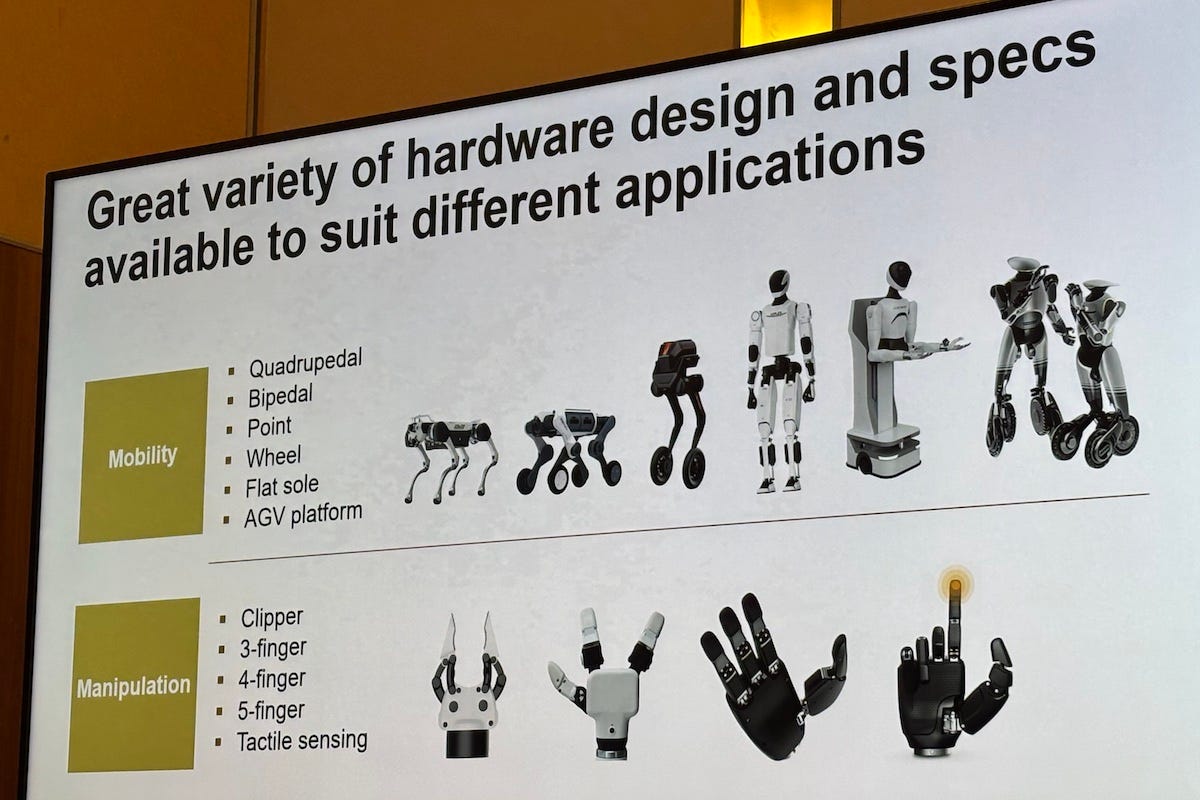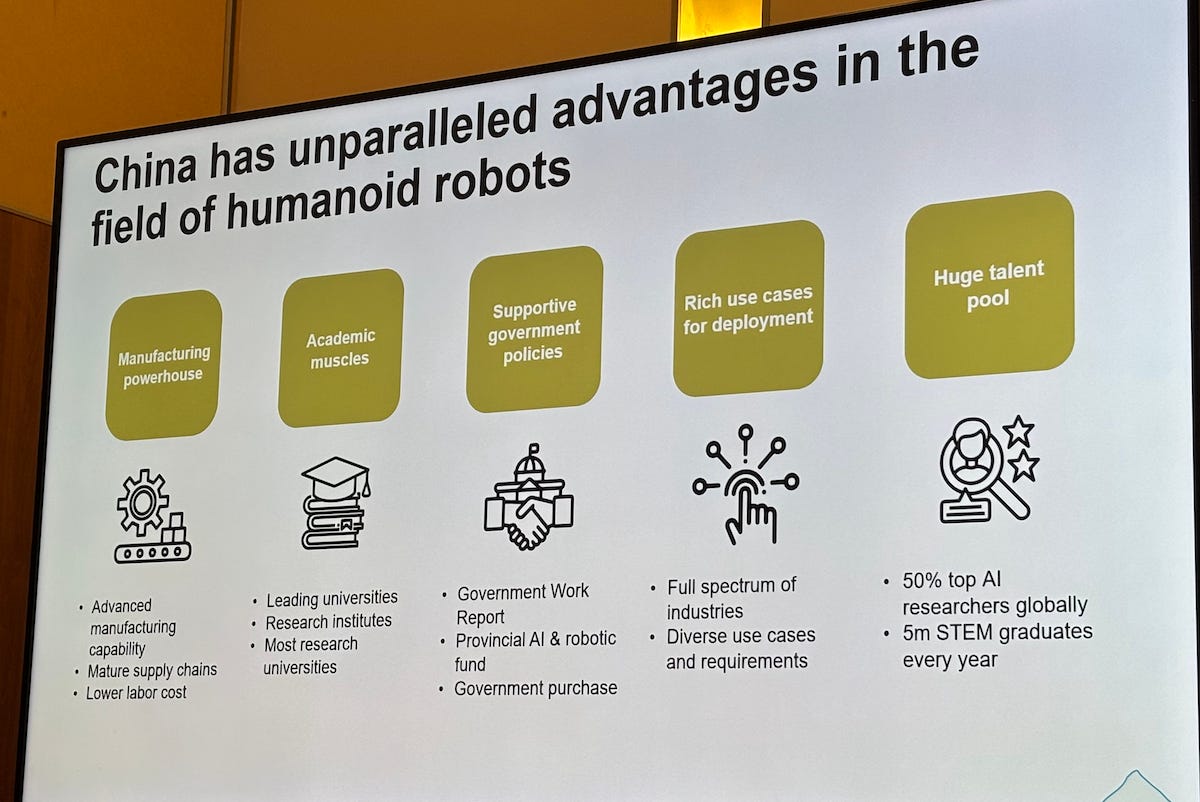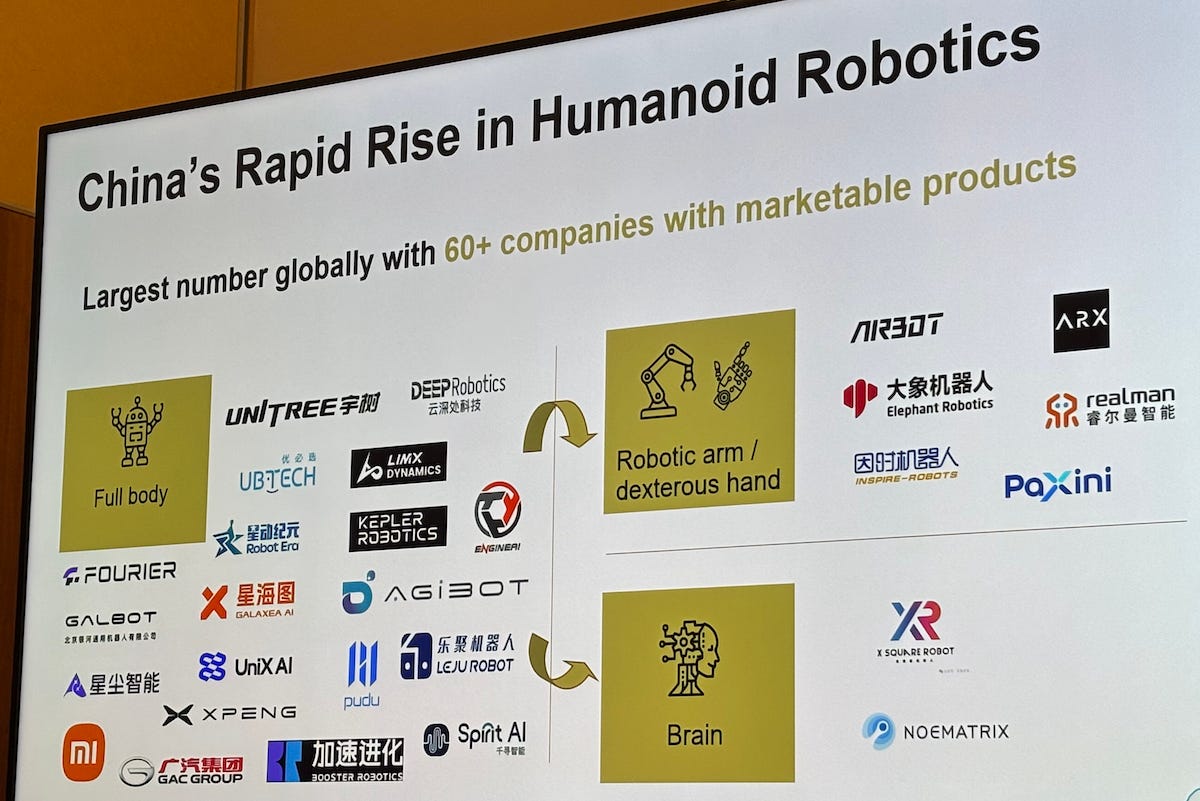China’s Humanoid Robotics Boom Offers Strategic Openings for Europe
Europe’s regulatory rigor and labor challenges make it fertile ground for deploying next-generation humanoid robots
China has become the world’s largest hub for humanoid robotics, with dozens of companies rapidly bringing market-ready machines to life. This explosive growth is redefining global robotics and creating a pivotal opening for Europe—not to compete on hardware, but to lead in real-world deployment.
Europe faces shrinking labor pools, mounting productivity pressures, and rising demand for automation. With its strong industrial base and tradition of regulatory leadership, it is ideally placed to transform China’s manufacturing breakthroughs into high-value economic gains.
“China can effectively and affordably produce anything at scale. You see more and more interesting robots coming to the market, and these are available at very affordable prices,” Aska Fang Liu, Founder and CEO at EnduX, said in a speech at the 2025 Humanoids Summit in London.
Liu said that China’s humanoid sector has become both vast and diverse, spanning hardware specialists like Unitree, academia-driven entrants such as Galaxea AI, and carmakers like GAC branching into robotics. She explained that other firms, including Xiaomi, are leveraging their established supply chains and electronics expertise to develop humanoids.
According to Liu, many of these companies are now integrating hardware, software, and AI-driven “robotic brains,” producing a sweeping variety of form factors from bipedal and wheeled humanoids to adaptable quadruped hybrids.
She noted that five advantages underpin China’s rise:
World-class manufacturing: China can produce almost anything at scale, quickly and affordably
Deep AI research capacity: Strong emphasis on AI and robotics across universities and research institutes
Proactive government policy: Humanoids and embedded AI are strategic priorities in government work reports
Broad industrial use cases: Established sectors such as automotive, logistics, and electronics provide ready deployment environments
Unparalleled talent base: Over 5 million STEM graduates annually, and more than half of global AI and robotics researchers are Chinese or of Chinese descent
“China is really uniquely positioned in the world to drive this field forward,” Liu said.
“Forty to sixty percent of humanoid components can be sourced from China’s electric vehicle supply chains. This existing infrastructure gives Chinese manufacturers a huge cost and speed advantage,” she added. “That’s why the variety and quality of designs you see in China are unmatched anywhere else.”
Rather than competing on hardware, Liu urged Europe to focus on deployment. She argued that Europe’s combination of labor shortages, strong industrial sectors, and leadership in ethics and safety regulation makes it the ideal testing ground for humanoid technology.
“What doesn’t make commercial sense in China can make perfect economic sense in Europe,” she said, encouraging companies to pilot cost-effective proofs of concept in China before scaling them on European soil.
Early-Stage but Actionable Use Cases
While the industry is still young, Liu highlighted four promising use cases already being tested extensively:
Autonomous inspection robots: Operating in factories and power plants to collect real-time sensor data and detect abnormalities
Interactive guide robots: Engaging visitors in public venues, exhibitions, or corporate showrooms to showcase innovations
Logistics and material handling robots: Managing repetitive tasks in warehouses, quality checks, and automotive kitting processes
Teleoperated robots: Controlled from lower-cost regions to perform tasks in high-cost markets, such as overnight retail or warehouse sorting
“These solutions are not science fiction—they are already on factory floors, in exhibition halls, and in logistics hubs,” Liu said. “We’ve seen robotic guides explaining exhibits at China Mobile’s innovation center, and patrol robots roaming power plants collecting real-time sensor data.”

She said robotic patrols can collect real-time sensor data, while guide robots can deliver engaging demonstrations in exhibition spaces; factory robots could reduce the burden of repetitive tasks, and teleoperation could allow 24/7 coverage at lower costs.
“Although it’s still early on, there are actually different use cases already being extensively tested in the world,” she said.
Navigating Talent
Responding to questions about Europe’s shortage of robotics engineers, Liu explained that EnduX embeds client-facing engineers in Europe to work directly with customers while collaborating with a vast talent pool in China. This model accelerates development and reduces costs.
“We try to bridge Europe and China, really bring the best of the two worlds,” she said.
“There are huge numbers of engineers in China who can handle fine-tuning, adaptation, and integration. Our European teams understand the culture, language, and client needs, while our Chinese teams bring scale and speed,” she said. “That combination solves both the cost and talent bottlenecks.”
Liu concluded that Europe’s competitive edge will lie in deploying and regulating humanoid robotics in tandem—gathering real-world data to inform policy while avoiding overly strict rules that could stifle innovation. She urged European leaders to move quickly, harnessing China’s hardware strengths and Europe’s governance capabilities to build a resilient robotics ecosystem.
“Europe can turn robotics from a technological showcase into a value creation engine,” she said. “But it has to act now—before the window closes.”
She said, if Europe can seize this moment, it could shape global standards while converting advanced robotics into meaningful economic value on its own terms.





